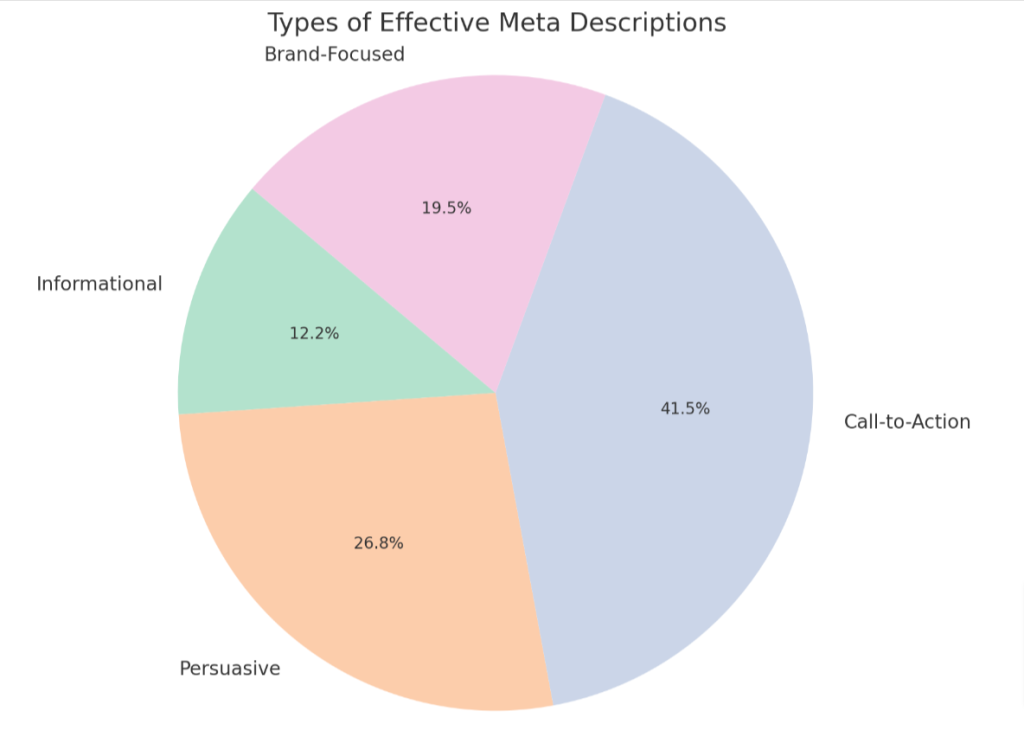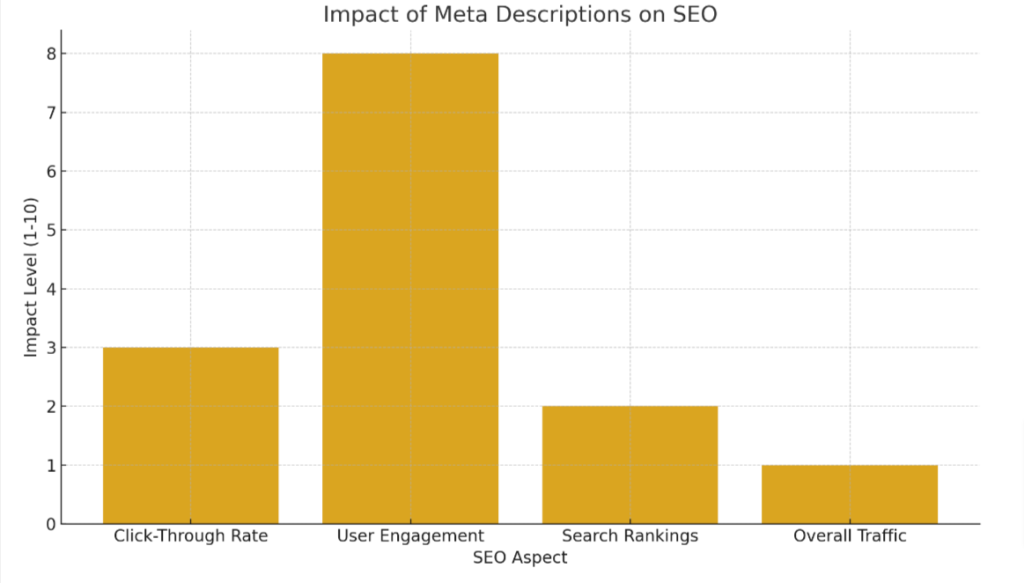Crafting Captivating SEO Titles and Headers for Your Content
Are you struggling to generate traffic on your webpage despite producing quality content? You’re not alone. Many businesses are missing out because they overlook the importance of SEO-friendly titles and headers.
This blog is designed to guide you through the process of crafting impressive, attention-grabbing titles that search engines love. Ready for a boost in online visibility and engagement? Dive in!
Key Takeaways
- SEO – friendly titles and headers are crucial for improving the visibility of your web pages in search engine results.
- Title tags and header tags play a significant role in attracting organic traffic and boosting website ranking.
- When crafting titles and headers, prioritize writing for humans first, keeping them short, utilizing keywords wisely, avoiding keyword cannibalization, and incorporating calls to action.
Understanding SEO-Friendly Titles and Headers
Title tags and header tags are crucial elements in optimizing a website for SEO. Title tags refer to the HTML element that specifies the title of a webpage, while header tags are used to structure headings within the content.
Understanding these components is essential because they play a significant role in search engine rankings and attracting organic traffic. Although both title and header tags contribute to SEO, it’s important to note that H1 tags specifically refer to the main heading on a webpage, whereas title tags appear in search engine results pages (SERPs).
Definition of title and header tags
Title tags occur in HTML documents as the clickable headline displayed on search engine results pages. They help search engines understand what your webpage is about, and they’re critical for usability, SEO, and social sharing.
Header tags (H1-H6), on the other hand, are used to separate headings and subheadings of a page from the main content. These elements can improve readability by providing structure and signposting for content while simultaneously aiding website ranking on search engines by utilising relevant keywords.
Importance for SEO
Effective SEO-friendly titles help websites to rank higher in search engine results. They play a crucial role in driving web traffic by attracting the interest of potential viewers.
The use of relevant keywords within your title increases its visibility on search queries, fostering stronger digital presence.
Headers, particularly H1 tags, also serve an important function for SEO. Search engines often rely on these headers to understand the content of a page better. Including targeted keywords can significantly improve SEO ranking and capture broader audience attention by enhancing your content’s relevance and accessibility.
Difference between H1 tags and title tags
H1 tags and title tags both play a crucial role in SEO, but they serve different purposes on a website. The title tag is what appears in the search engine results pages (SERPs) and at the top of your browser; it’s often the first component of your site users see during their online searches.
It gives an immediate idea about the content found on that particular web page. On the other hand, H1 tags are located within the body of your webpage as main headers, offering readers an insight into more specific details about the content beneath them.
While you can only have one title tag per page to avoid confusion for search engines, multiple H1 tags may be used if they assist in organizing information logically for readers.
Best Practices for Writing SEO-Friendly Titles and Headers
When writing SEO-friendly titles and headers, it is important to keep a few best practices in mind. First and foremost, remember to write for humans first and search engines second.
Keep your titles short and to the point, making sure they accurately reflect the content of your page. Utilize keywords wisely throughout your title and header tags, but avoid keyword cannibalization by using different keywords for each page.
Additionally, make your titles catchy and use calls to action to engage readers.
Write for humans first
When creating SEO-friendly titles and headers, it’s important to remember to write for humans first. While optimizing your content for search engines is necessary, it shouldn’t come at the expense of readability and user experience.
Your titles and headers should be clear, engaging, and relevant to your target audience. By prioritizing human readership, you can ensure that your content resonates with them and encourages them to click through and explore further.
Don’t forget to incorporate relevant keywords naturally into your titles and headers so that they appeal both to humans and search engine algorithms.
Keep titles short and to the point
Crafting concise and precise titles is crucial for effective SEO. When writing titles, it’s important to keep them short and to the point. By using only the necessary words, you can grab the reader’s attention and convey your message quickly.
Long-winded titles can be overwhelming and may not get as much engagement from users. So, make sure to choose your words carefully and optimize your title tags by including relevant keywords that accurately represent the content of your page.
This way, search engines and users alike will be able to understand what your page is about in just a few words.
Utilize keywords wisely
Utilize keywords wisely to boost the SEO-friendliness of your titles and headers. Incorporate relevant keywords that align with your content and target audience. Place them strategically throughout your title or header, ensuring they flow naturally and do not appear forced.
By using keywords effectively, you can improve visibility in search engine results and attract more organic traffic to your website.
Avoid keyword cannibalization
To improve your SEO rankings, it’s important to avoid keyword cannibalization. This refers to the practice of using the same keywords across multiple pages on your website, causing them to compete with each other in search engine results.
Instead, focus on creating unique and specific keywords for each page, targeting different aspects of your content. By doing so, you’ll maximize your chances of ranking higher for a variety of relevant search queries and drive more organic traffic to your site.

Use calls to action and make titles catchy
Crafting compelling titles is crucial for capturing your audience’s attention and driving engagement. Incorporating calls to action in your titles can entice readers to take the desired action, whether it’s clicking on a link, reading an article, or making a purchase.
By using powerful verbs and persuasive language, you can create catchy titles that make people curious and eager to explore further. Remember to include relevant keywords strategically throughout your title for better search engine optimization (SEO) results and improved visibility online.
With attention-grabbing calls to action and catchy titles, you’ll enhance the effectiveness of your content and boost overall reader engagement.
Tips for Crafting SEO-Friendly Titles and Headers
Choose keywords strategically and incorporate them naturally into your titles and headers. Research popular and relevant keywords in your industry to ensure your content aligns with what people are searching for.
By using the right keywords, you can increase the chances of your content being discovered by search engines and attract more organic traffic to your website.
Choose keywords strategically
Crafting SEO-friendly titles and headers starts with choosing keywords strategically. Keywords are the phrases or words that users type into search engines when looking for information.
By selecting relevant and popular keywords, you increase the chances of your content appearing in search engine results pages (SERPs). It’s important to conduct keyword research to identify which terms are most likely to be used by your target audience.
Choose keywords that accurately represent the content of your page, as well as those that have high search volumes but low competition. This way, you can optimize your titles and headers effectively and improve your website’s visibility in search engines.
Draft and optimize title tags
Crafting compelling and SEO-friendly title tags is crucial for improving your website’s visibility in search engine results. When drafting your title tags, focus on using relevant keywords that accurately describe the content of your page.
Optimize them by keeping them concise and to the point, avoiding excessive length that could be cut off in search results. By putting thought into your title tags and utilizing optimization techniques, you can significantly enhance your chances of ranking higher in search engine rankings and attracting more organic traffic to your website.
Utilize brand name
Incorporating your brand name into titles and headers is crucial for SEO. By utilizing your brand name, you establish a clear connection between your content and your business. This helps search engines recognize the relevance and authority of your website, ultimately improving its ranking in search results.
Including your brand name also enhances brand recognition among users, making it easier for them to identify and remember your site. So don’t forget to incorporate your brand name strategically in your titles and headers to maximize the impact of your SEO efforts.
Create sensible meta descriptions
Crafting sensible meta descriptions is a crucial part of optimizing your website for search engines. Meta descriptions are short snippets of text that appear below the title tag in search engine results pages (SERPs).
They provide a brief summary of what the webpage is about and can greatly impact click-through rates.
When creating meta descriptions, it’s important to keep them concise and informative, using clear language that accurately describes the content on the page. Avoid stuffing keywords into your meta description as this can come across as spammy to both search engines and users.
Instead, focus on writing compelling copy that entices users to click on your link.
By taking the time to create sensible and engaging meta descriptions, you can improve your website’s visibility in SERPs and increase the likelihood of attracting quality traffic to your site.
Use proper optimization tools
Optimizing titles and headers for better SEO ranking is crucial, and one way to achieve this is by using proper optimization tools. These tools can help you analyze keywords, assess the effectiveness of your titles and headers, and make improvements where needed.
With these tools, you can easily track the performance of your SEO efforts and take necessary actions to boost your visibility in search engine results pages. By utilizing proper optimization tools, you can stay ahead of the competition and ensure that your titles and headers are fully optimized for maximum impact.

How to Optimize Titles and Headers After Publication
After publishing your content, it is crucial to optimize your titles and headers for better SEO performance. To do this, you can view and edit the title tags to ensure they accurately represent the content on the page.
If you come across incorrect title tags, consider updating them with relevant keywords and phrases. This way, you can enhance your website’s visibility in search engine rankings and drive more organic traffic to your site.
Viewing and editing title tags
To optimize your title tags for SEO, you need to be able to view and edit them. This can typically be done through your website’s content management system or HTML editor. Simply navigate to the section where you can edit the page’s metadata, and look for the field that allows you to input the title tag.
From there, you can make changes as needed – whether it’s adjusting keyword placement, refining your headline, or adding a compelling call to action. Being able to easily view and edit your title tags gives you control over how they appear in search engine results pages, helping improve your chances of attracting clicks and boosting your website’s visibility.
Tips for dealing with incorrect title tags
- Check for errors: Regularly review your website’s title tags to ensure they are accurate and relevant. Mistakes can happen, so double-check for any typos or incorrect information that could negatively impact your SEO efforts.
- Update and optimize: If you discover that a title tag is incorrect, take immediate action to correct it. Make sure the corrected tag includes relevant keywords and accurately describes the content of the page.
- Monitor search engine results: Keep an eye on how your pages appear in search engine results. If you notice any discrepancies between the titles shown in the search results and your actual title tags, it may be an indication of incorrect or outdated tags.
- Use redirection: In cases where a page with an incorrect title tag has been indexed by search engines and has gained some visibility, consider using 301 redirects to point users to the correct page with the appropriate title tag.
- Stay consistent: Consistency is key when it comes to optimizing title tags. Ensure that all similar pages on your website have consistent formatting and keyword usage in their respective title tags for better user experience and improved SEO performance.
Conclusion
In conclusion, writing SEO-friendly titles and headers is crucial for optimizing your web pages and improving search engine rankings. By following the best practices mentioned in this article, such as utilizing keywords wisely and crafting catchy titles, you can create compelling content that not only attracts readers but also appeals to search engines.
Remember, a well-optimized title can make all the difference in driving organic traffic to your website.

